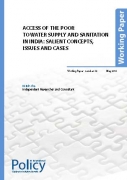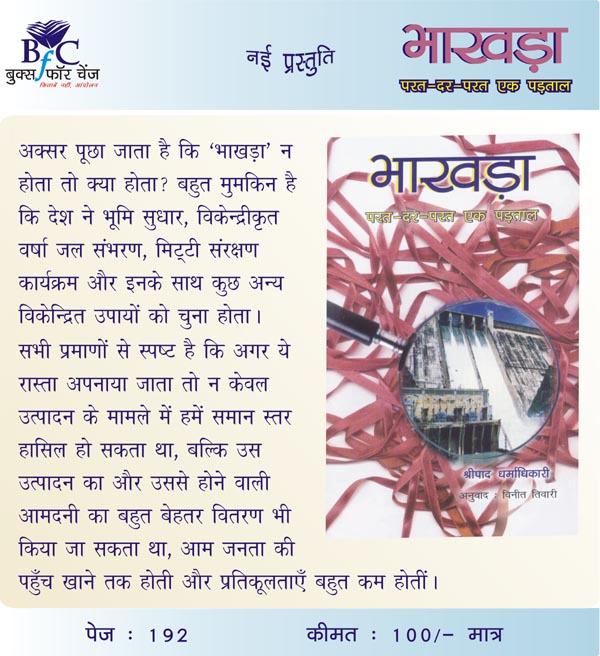/regionsmachal-pradesh-and-punjab
Himachal Pradesh and Punjab
Photo exhibit on water conservation - Delhi's might, Renuka's plight - JNU Art and Aesthetics School, Delhi, September 26 – October 2, 2011
Posted on 30 Sep, 2011 08:19 PMPhoto Exhibit: Delhi's might, Renuka's plight - 26th Sept-2nd Oct
Venue: Art & Aesthetics Gallery, JNU Campus, New Delhi

The School of Arts and Aesthetics, JNU is one of the few places in India that offers post-graduate degree courses in the theoretical and critical study of the cinematic, visual and performing arts. Moreover, it is the only place in India where these disciplines are offered in an integrated programme that allows students to understand the individual arts in a broader context of history, sociology, politics, semiotics, gender and cultural studies apart from being able to integrate the study of one art form with the other arts. The three streams of study offered at the school are Visual Studies, Theatre & Performance Studies and Cinema Studies.
ADB funded hydro projects in Himachal Pradesh: Disastrous experience - Press release by Him Dhara, SANDRP and HLJM
Posted on 06 Jun, 2011 06:07 PMReport questions ADB funded projects under the 'Himachal Clean Energy Development Programme'.
- ADB loans for four hydroprojects at eco-fragile zones
- Livelihood concerns and environmental issues un-addressed
- Section 17/4 – Urgency clause being used by HPPCL for forced acquisition of land
- Poor EIA reports and non compliance to environmental norms
Recently, a Public Hearing for the World Bank funded Luhri Hydro Electric had to be cancelled after public protests making it clear that the environmental and social impacts of Hydropower projects as well as the increasing gap between their promise and performance, especially in the Himalayan region have become issues of serious concern. And yet these projects continue to be promoted in the garb of renewable and clean energy. So much so that governments are borrowing millions of rupees from international banks and financial institutions to fund these so called 'green' projects.The four ADB financed hydro power projects being constructed by HPPCL include the 195 MW Integrated Kashang Stage I, II and III and the 402 MW Shongtong-Karccham in Kinnaur. The other two projects are the 111 MW Sawara-Kuddu hydropower projects in Shimla district and the 100 MW Sainj hydropower project in Kullu District.
Land acquisition for Renuka dam continues despite uncertainties - Press release from the Renuka Bandh Sangharsh Samiti
Posted on 21 Dec, 2010 12:24 PMForwarded to the portal by: Manshi Asher
Content Courtesy: Himvani
Author: Renuka Bandh Sangharsh Samiti
Despite protest against forced acquisition of land, Himachal Pradesh Power Corporation Limited (HPPCL) and revenue administration today notified Section 9 of the Land Acquisition Act 1894, for approximately 680 big has (about 57 hectares) of land of Panaar Village for the Renuka Dam Project. In a letter to the Chief Justice of Himachal Pradesh High Court sent today, activists appealed for a stay on land acquisition for the project, considering the uncertainty surrounding the project.
Access of the poor to water supply and sanitation in India - Salient concepts, issues and cases by the International Policy Centre for Inclusive Growth
Posted on 20 Dec, 2010 10:04 PM This paper by the International Policy Centre for Inclusive Growth deals with access of the poor to water supply and sanitation in India. It argues that economic, technical, institutional as well as social factors constrain access to safe drinking water and proper sanitation in India for both the urban and rural poor, and that coverage figures do not reflect this restricted access. It finds that, increasingly, communities are being required to manage their own water and sanitation schemes, not just in rural areas but in urban ones as well.
This paper by the International Policy Centre for Inclusive Growth deals with access of the poor to water supply and sanitation in India. It argues that economic, technical, institutional as well as social factors constrain access to safe drinking water and proper sanitation in India for both the urban and rural poor, and that coverage figures do not reflect this restricted access. It finds that, increasingly, communities are being required to manage their own water and sanitation schemes, not just in rural areas but in urban ones as well.
The paper deals with domestic water supply and sanitation and presents a historical overview of the phenomenon in rural and urban India. This is followed by a critique of available figures for coverage which, it is contended, seem exaggerated because they do not account for the several constraints to access. It addresses the specific institutional problems faced in the public sector delivery of these two utilities in India apart from dealing with the parallel yet thus far limited presence of the private sector in these twin arenas.
Snow and glacier contribution in the Satluj river at Bhakra dam - A research report by National Institute of Hydrology
Posted on 25 Jun, 2010 12:07 AMThe study estimates the average contribution of snow and glacier melt runoff in the annual flow of Satluj river at Bhakra dam. This study is restricted to the Indian part of Satluj basin. A water balance approach was used to determine the average snow and glacier contribution to the annual flows.
Capacity evaluation of Bhakra reservoir using digital analysis of satellite data - A research report by National Institute of Hydrology
Posted on 23 Jun, 2010 10:48 PMThe study assesses sedimentation rate, water spread area and volume of the Bhakra reservoir in Satluj basin using remote sensing data of IRS-1B satellite and LISS-II sensor data of the years 1988-89 and 1996-97. The original elevation-area capacity curves and the reservoir levels on the eight dates of pass of the satellite were obtained from the Bhakra Beas Management Board, Nangal.
Using the trapezoidal formula, the capacity in between the maximum (513.904 m) and minimum (450.436 m) observed levels was assessed for the year 1996-97. The loss of capacity till 1988-89 was 491.315 mcum and till 1996-97 was 807.354 mcum. These could be attributed to the sediment deposition in the zone of study of reservoir.
"Bhakra-Parat Dar Parat Ek Padtal":Hindi version of Shripad Dharmadhikari's book "Unravelling Bhakra"
Posted on 27 Oct, 2007 03:31 AM Ordering and other information about the book is here
Ordering and other information about the book is here